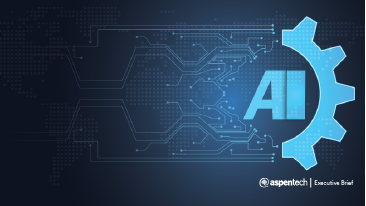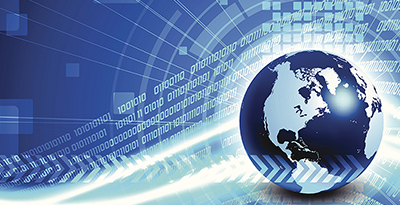We’re hearing a lot about the “new normal” and what that will entail, but the fact is we really don’t know exactly what this next phase will look like. It’s still being defined by global health conditions, international politics, changing regulations and the overall condition of the economy. That’s a lot of uncertainty coming at us on a massive scale.
With this level of upheaval and unpredictability comes an imperative to change the ways we’ve conducted business for the last several decades. What has worked in the past won’t necessarily work in this environment, and the need to carve out a true competitive advantage will be greater than ever as companies adapt to changing conditions. It’s a new world, and we need new solutions.
As such, companies are in search of technology that will give them greater resilience, flexibility and agility — and with that, the ability to respond to shifting market conditions and thrive even in times of uncertainty. Key to this will be the development of increasingly autonomous processes that enable industrial facilities to instantly react and adapt to changes across the value chain, thereby driving new levels of safety, sustainability and profitability.
This is a vision we call the Self-Optimizing Plant, and it is made possible by the emergence of new technology that combines data insights enabled by artificial intelligence (AI) with industry-specific first principles models and domain expertise. It’s not just taking “generic” AI, which can be used to resolve a wide range of data-centric issues across any type of business, and trying to apply it to an oil, gas or chemical facility. This is technology that is explicitly designed to deliver comprehensive business outcomes for the needs of capital-intensive industries.
As such, we’ve termed this specifically targeted technology “Industrial AI.” It doesn’t supersede all of the knowledge and expertise we’ve accumulated over the decades to continuously improve the safety, reliability and efficiency of complex processes — rather, it takes that base of experience and supercharges it to transcend the entire business.
As an example, many companies are striving to drive higher margins by enhancing their existing processes to reduce the gap between planned and actual performance. This means fully integrating and aligning key functions such as planning and scheduling with closed-loop automation systems like advanced process control and dynamic optimization. Leading organizations are already exploring the approach to augmenting production optimization with Industrial AI.
Importantly, Industrial AI also helps create a new class of workforce enablement technology. This includes capabilities such as cognitive guidance for decision-making and interactive operator training, which can empower workers to fully leverage the advances in production optimization. These developments give personnel guided workflows and immediate access to organizational knowledge and new insights, supplementing decades of industry experience.
A number of companies have also adopted AI-powered solutions for predictive maintenance, which give them a longer warning period for looming equipment issues, so they can actually change how they respond to potential downtime. These organizations gain the flexibility to choose when to perform maintenance based on the overall economic projections, considering the operating, maintenance and supply chain implications of any potential downtime.
All of this is enabled by technology that provides a holistic view of the entire operation. By incorporating AI capabilities into existing operating technology (OT) and information technology (IT), the industrial systems of tomorrow will be able to orchestrate across functional silos and operate semi-autonomously (and eventually autonomously) to drive maximum profit. And they’ll be able to do this while simultaneously minimizing environmental impact and ensuring greater reliability and efficiency.
In the simplest terms, this is what the creation of the Self-Optimizing Plant can offer:
- Greater agility to thrive in an extremely volatile environment
- New ways to empower the next-generation workforce
- The ability to meet safety and sustainability goals
- A pathway to greater profitability
You can’t ask for much more than that: a solution that enables you to optimize across multiple goals simultaneously, while also considering the economic context of the entire enterprise. It’s an incredibly exciting prospect, and one that you can begin working toward by applying technology that exists today. I invite you to learn more about the possibilities in my new executive brief, The Self-Optimizing Plant: A New Era of Autonomy Powered by Industrial AI.






Leave A Comment